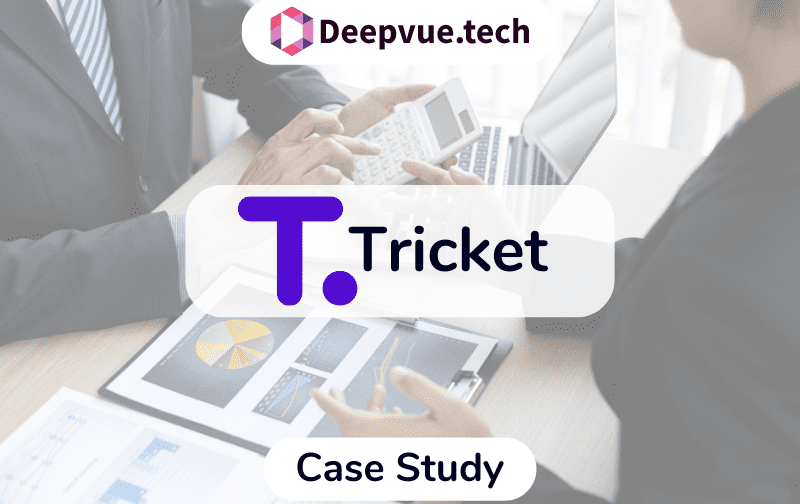It has never been simpler to borrow money. What used to take branch visits, paperwork, and days of processing time is now accomplished in mere taps on a mobile phone. This transition is fueled by digital lending—a technology-fueled revolution in accessing, processing, and managing credit. From a personal loan to a working capital facility or a buy-now-pay-later (BNPL) option at checkout, digital lending is fueling the future of credit. In this blog, we decode what exactly digital lending is, how it works, the prime advantages, and what borrowers and lenders must know.
What is Digital Lending?
Digital lending involves technology to originate, underwrite, disburse, and collect loans based on digital means rather than physical infrastructure. No longer do borrowers have to stand in lines at banks or complete paper forms to apply for loans. Now, borrowers can apply for loans on websites, on mobile apps, or through end-to-end lending journeys on digital platforms.
How Digital Lending Works?
- Application: Borrowers apply for loans through apps or websites. This might be on a lender’s own site or via an embedded process within an e-commerce, travel, or payroll platform.
- Verification: Identity and financial documents are checked using tools such as:
- e-KYC (Aadhaar/PAN)
- DigiLocker
- Bank statement parsers
- Bureau reports
- Underwriting: Credit bureau scores, bank behavior, consistency of income, GST information (for SMEs), etc., are used by lenders to determine risk. AI/ML models can also analyze repayment ability to some extent using alternative data.
- Approval and Disbursement: The Eligible loan is approved in real time and digitally disbursed into the borrower’s bank account or prepaid card.
- Repayment and Monitoring: Repayment by mandate (e-NACH) manages EMI collection. Lenders may also keep an eye on account conduct to search for signs of repayment stress or fraud.
What is the Credit Underwriting Process in Digital Lending?
The credit underwriting process in digital lending is the process by which lenders determine a borrower’s willingness and capability to repay a loan through digital means and data. In contrast to conventional underwriting based on significant manual checking and credit bureau scores, digital underwriting uses real-time data sources, including:
- Bank statement analysis
- Consistency of income and salary credits
- Credit bureau reports
- GST data (for companies)
- Alternative data, such as payment bills or spending habits
- AI/ML behavioral risk score models
Advantages of Digital Lending
For Borrowers:
- Speed: Loans are disbursed and processed in hours, sometimes minutes.
- Convenience: Apply at any time, anywhere—no branch to visit.
- Financial Inclusion: People with thin credit history or black market income sources get access to formal credit.
- Transparency: Terms, interest rates, and fees are disclosed upfront.
For Lenders:
- Scale: Take on and serve customers across India without increasing physical infrastructure.
- Efficiency: Workflow automation lowers the cost of operations and processing time.
- Improved Risk Assessment: Availability of real-time bank data, alternative data sources, and behavioral analytics.
- Custom Products: Adaptive credit products driven by borrower behavior, including pay-per-use loans or flexible repayment.
Types of Digital Lending Models
- Direct-to-Customer (D2C) Platforms: Fintech lenders directly lend to customers from their web/pages.
- Lending-as-a-Service (LaaS): Technology providers empower banks/NBFCs to provide online lending on the strength of white-label digital platforms.
- Marketplace Lending: Peer-to-peer marketplaces match borrowers and lenders, whether a financial institution or an individual.
- Co-Lending: Digital NBFCs collaborate with banks to co-fund loans through APIs and real-time risk-sharing.
- Embedded Lending: Contextually provided loans at point-of-sale, checkout (e.g., BNPL), or through platforms such as payroll software, edtech portals, and travel apps
Technologies Powering Digital Lending
- e-KYC & OCR: Effortless verification of identity based on Aadhaar-based authentication, facial match, or PAN OCR.
- APIs & Integrations: Be connected with credit bureaus, GST, DigiLocker, banks (via Account Aggregator), and fraud databases in real time.
- AI/ML Underwriting: Assess borrower risk using trends in bank statements, transaction rate, salary deposits, spending habits, and even cellular phone metadata.
- Automation: Document validation rules-based engines, auto-approvals, and dynamic pricing.
- Analytics & Monitoring: Real-time dashboards to identify earliest warning signs (overdue credits, low balances, salary interruptions).
Regulatory Landscape
The emergence of online lending has prompted fresh regulatory oversight in India. Top RBI (Reserve Bank of India) guidelines are:
- Explicit disclosure of lending associations and fees.
- Release of funds only into the regulated entity’s bank account.
- No unauthorized storage of borrower information.
- Consent-based data access through the Account Aggregator framework.
- Stringent norms regarding collection practices, grievance redressal, and customer communication.
Challenges in Digital Lending
- Fraud Risk: With remote onboarding, synthetic identities and mule accounts are harder to detect without robust fraud detection systems.
- Credit Evaluation for New-to-Credit Borrowers: Most borrowers will not have a bureau record, so alternative underwriting is a requirement.
- Data Privacy: Balancing borrower consent with data storage security and personalization.
- Delinquency Management: Digital lenders also tend to handle small-ticket loans, and hence, conventional collections are not economical. Hence, reliance on data-driven early warning systems becomes vital.
Future of Digital Lending
- Real-Time Credit Monitoring: Using ongoing data feeds via Account Aggregator to keep tabs on borrower health.
- Hyper-Personalized Lending: Offers tailored to borrower behavior, spending patterns, or repayment discipline.
- Deeper Embedded Journeys: Seamless credit products across platforms—education, healthcare, travel, commerce.
- Lending to Informal Segments: Utilizing mobile recharge behavior, utility bill payments, and QR-code collections to ensure gig workers and small traders.
Conclusion
Digital lending is more than a nicety – it’s a credit system structural shift. With faster and more inclusive access, and more intelligent risk-taking, it creates speed and inclusiveness for borrowers and allows lenders to grow responsibly. But it relies on solid technology, data security, and borrower confidence.
For lenders and fintechs alike, digital lending is not only the future—it’s here now.
FAQ
What is digital lending?
Digital lending involves lending money through digital platforms such as websites or applications, leveraging technology for onboarding, verification, underwriting, and repayment.
How is digital lending different from traditional lending?
As compared to conventional lending, which involves documentation and visits, digital lending is automated, paperless, and much quicker.
What types of loans are offered digitally?
Personal loans, consumer durables loans, MSME credit, pay day loans, and BNPL (Buy Now, Pay Later) are frequently provided through digital lending platforms.
Who can use digital lending platforms?
Anyone with a smartphone and basic documents (like PAN, Aadhaar, and bank statement) can apply. Even new-to-credit users can qualify with alternative data.
How long does it take to get a digital loan?
It can take as little as a few minutes to a few hours, depending on verification and eligibility.








